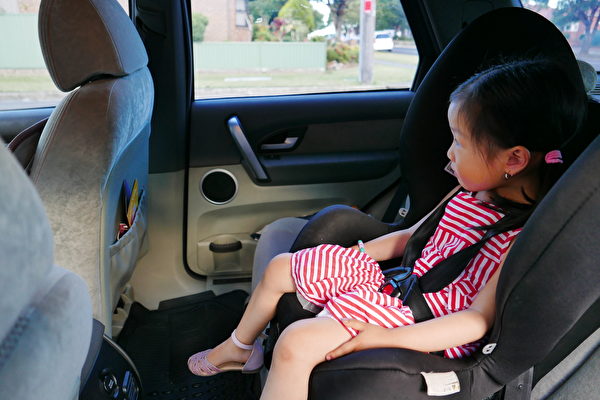On May 22, 2024, during the scorching summer days, there is a hidden deadly risk for young children.
Since May, the California Office of Traffic Safety (OTS), the California Department of Transportation (Caltrans), and various organizations across the United States have launched the “Vehicular heatstroke awareness” campaign, urging people not to leave children alone in hot vehicles to prevent heatstroke and even fatalities.
According to data from the National Highway Traffic Safety Administration (NHTSA), in the past 25 years, over 965 children have died from heatstroke after being left in/trapped in hot vehicles. Heatstroke remains a leading cause of non-crash-related deaths in children aged 14 and under.
Sweating is one of the most important ways for the body to regulate temperature, but young children do not sweat as effectively as adults, which causes their body temperature to rise much faster than adults.
NHTSA points out that children’s body temperature can rise 3 to 5 times faster than adults, and when a child is left in a hot car, their body temperature can quickly skyrocket. When a child’s core body temperature reaches 104 degrees Fahrenheit (about 40 degrees Celsius), heatstroke begins; at 107 degrees Fahrenheit (about 41.7 degrees Celsius), death can occur, potentially turning into a tragedy in just a few minutes.
Caltrans reminds parents that even in temperatures as low as 60 degrees Fahrenheit (about 15.6 degrees Celsius), the temperature inside a vehicle can quickly rise to lethal levels. Leaving children unattended in a vehicle, regardless of the duration, can lead to tragic and irreversible consequences.
Furthermore, parents should pay attention to details: if a child develops heat rash or sunburn, it is an early sign of heatstroke. If other abnormal symptoms appear, immediate help should be sought. Other symptoms of heatstroke include a body temperature above 103 degrees Fahrenheit (about 39.4 degrees Celsius), rapid pulse, nausea, confusion, dizziness, headache, hot, red, dry, or sweaty skin, as well as strange behavior like irritability.
OTS and Caltrans urge parents and caregivers to adopt the following simple habits to prevent heatstroke:
• Never leave children alone in the car, not even for a moment;
• Develop the habit of “look before you lock” before exiting the vehicle;
• Keep an eye on your vehicle and ensure children cannot access keys or remote devices;
• Place personal items like wallet or briefcase on the back seat as a reminder to check the back seat before exiting and locking the vehicle;
• Write a note or place a stuffed toy on the passenger seat to remind you that there is a child in the back seat;
• Be vigilant: if you find a child alone in a car, assess their health condition. If the child shows signs of distress, call 911 and try to locate the guardian.

